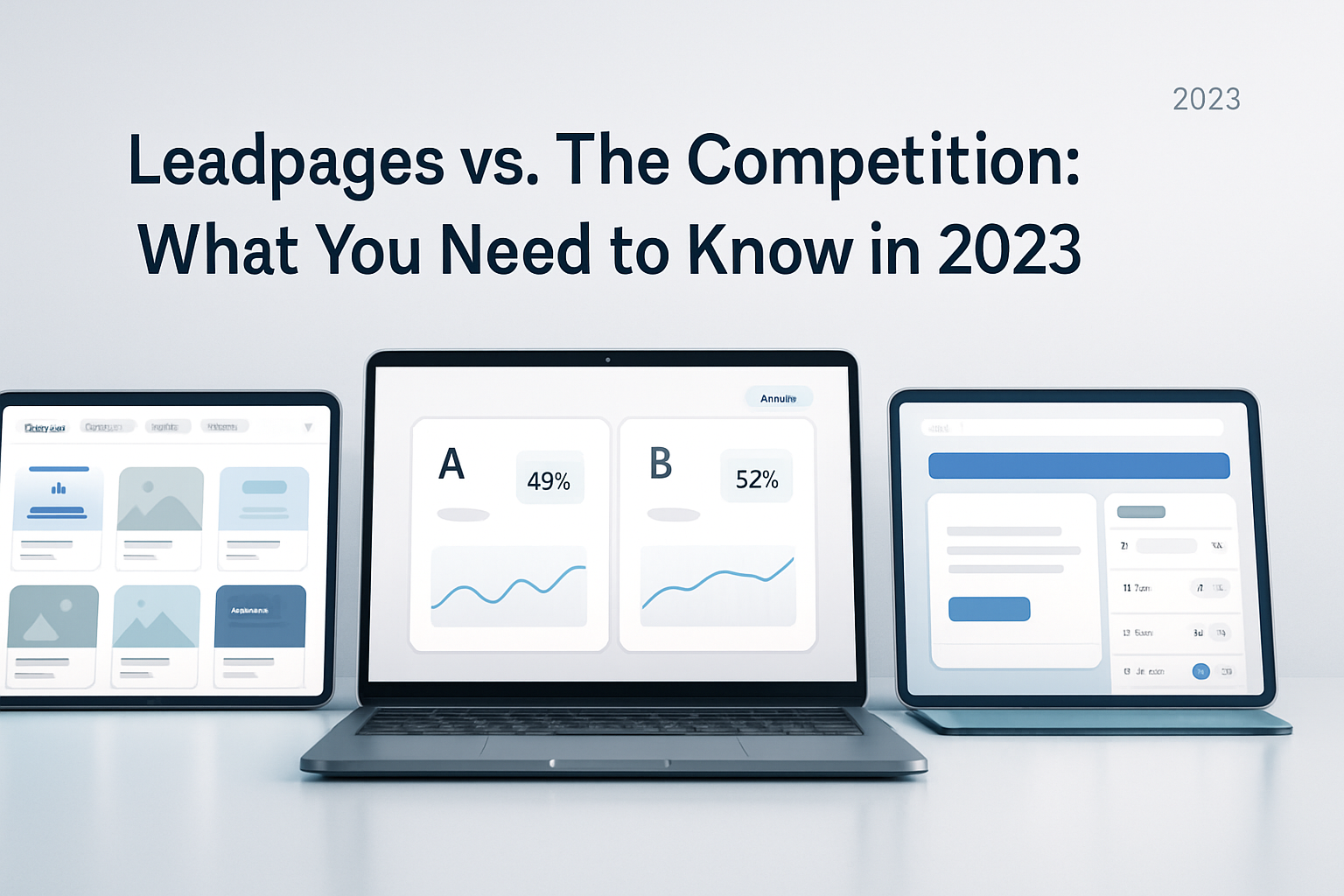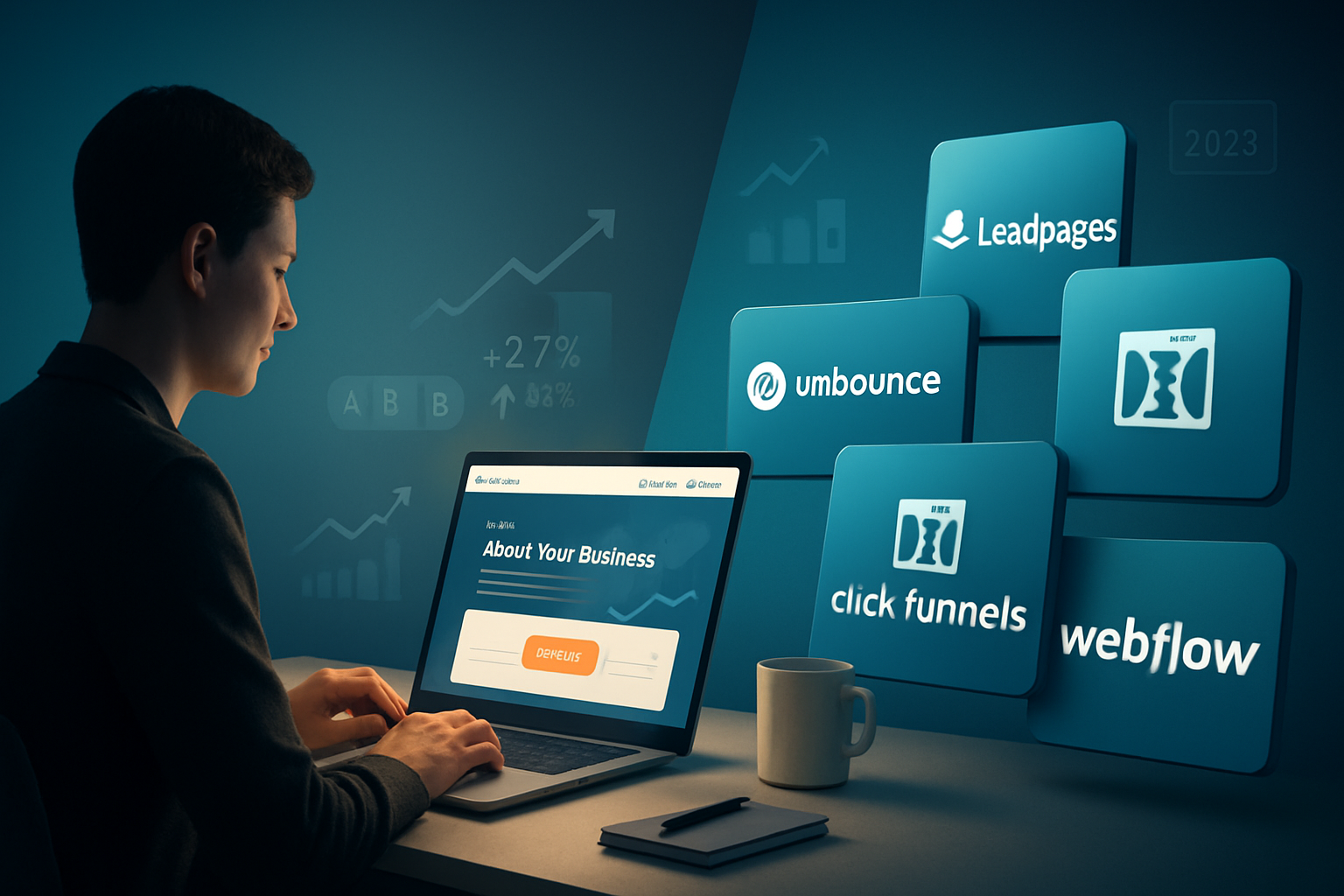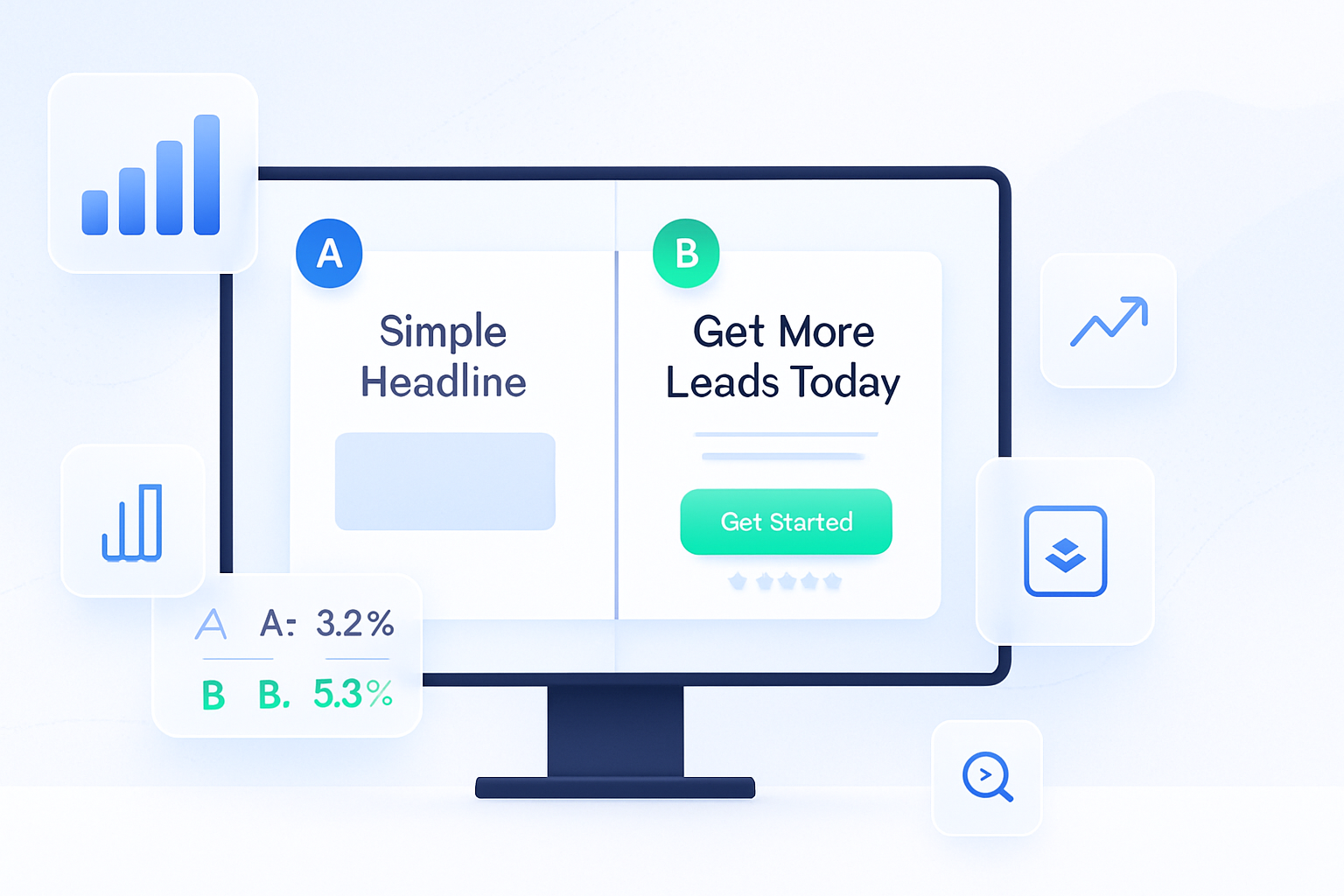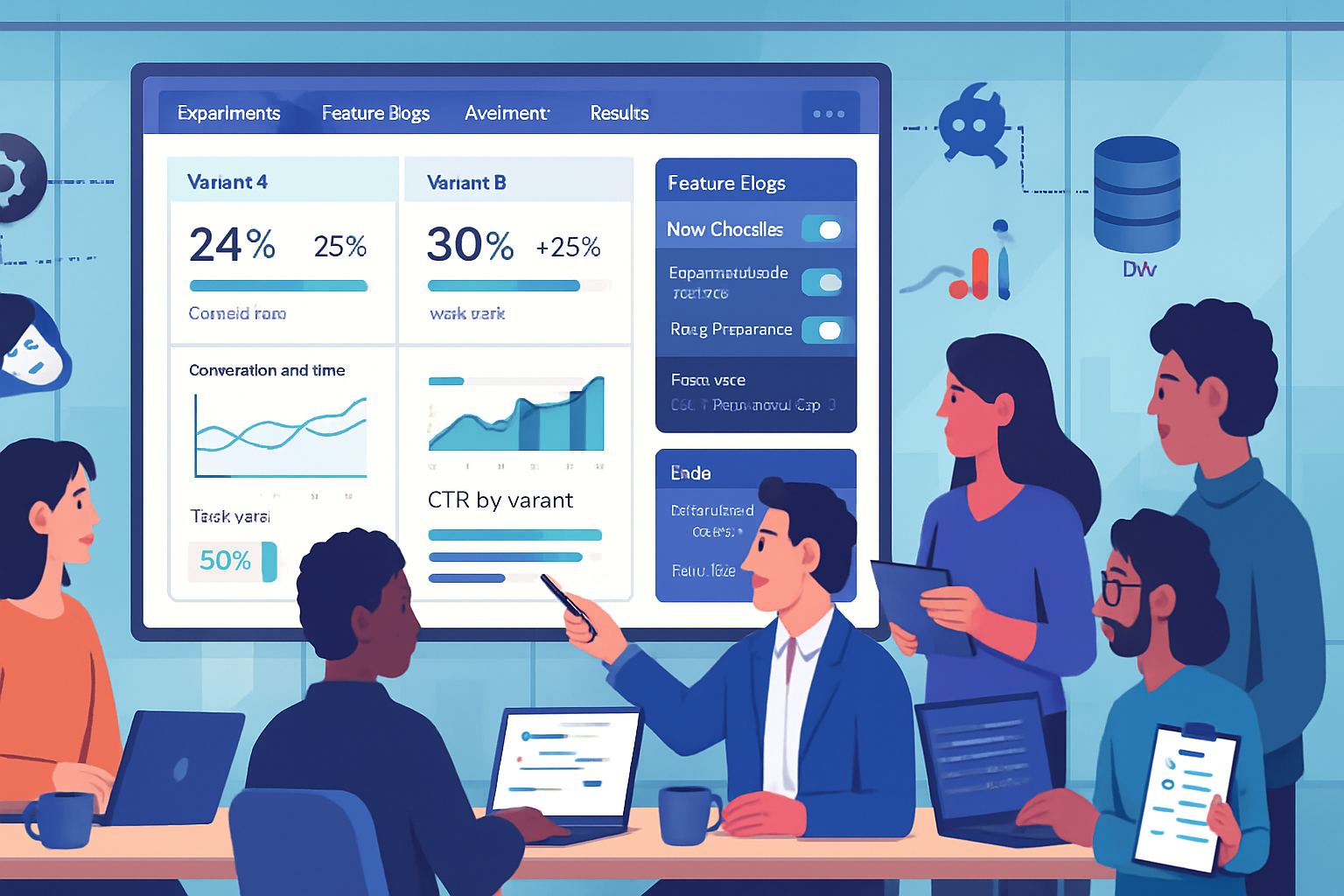· marketing · 6 min read
Leadpages vs. The Competition: What You Need to Know in 2023
A practical, side-by-side analysis of the 2023 landing-page landscape: features, pricing, usability, and why Leadpages remains a top pick for budget-conscious businesses who want fast, high-converting pages.

Outcome: by the time you finish this post you’ll know which landing-page platform to trial this week - the one that gives you the best mix of speed, conversions and cost for your business.
Why this matters now
Landing pages are where ad spend, traffic and offers finally meet. The right builder speeds production, improves conversion rates and reduces friction between visitor and purchase or signup. Pick the wrong tool and you waste time or money. Pick the right one and you launch winning pages faster than competitors.
In this article you’ll get:
- A clear feature-by-feature comparison of Leadpages and its main competitors in 2023.
- Pricing and usability context so you can match a tool to your needs.
- A short decision checklist with recommended picks by use case.
What Leadpages promises (and what it actually delivers)
Leadpages positions itself as the easy, conversion-focused solution for small businesses, creators and marketers who need high-performing pages without developer time. The platform includes drag-and-drop page building, responsive templates, popup and alert-bar lead capture, A/B testing, built-in hosting, and integrations with popular email and CRM tools. See the official feature overview at Leadpages for the full list Leadpages Features.
Why it still holds ground in 2023
- Speed to launch - Leadpages’ templates and simplified editor let non-technical users launch pages fast. Short learning curve. Fast wins.
- Built-in conversion tools - popups, alert bars and simple A/B testing are available without extra apps. That reduces complexity and monthly costs.
- Cost-effectiveness - compared to enterprise-level solutions, Leadpages often hits a lower price point for core conversion features.
- Predictable workflow - you don’t need a developer for most customizations.
The competition - concise profiles
Unbounce
- What it excels at - advanced conversion optimization (dynamic text replacement, server-side rendering, sticky bars, advanced A/B testing) and performance tuning for paid traffic.
- Best for - agencies and marketers running frequent experiments and ads at scale.
- Consider - higher price and slightly steeper learning curve than Leadpages.
- Official site: Unbounce
Instapage
- What it excels at - post-click personalization, collaboration features for teams, built-in heatmaps and analytics, and a highly flexible visual editor.
- Best for - companies that need pixel-perfect pages and team collaboration - especially mid-market to enterprise.
- Consider - one of the more expensive options for landing pages.
- Official site: Instapage
ClickFunnels
- What it excels at - full sales funnels (multiple-step funnels, order forms, membership areas) rather than a single landing page.
- Best for - businesses focused on direct sales funnels, upsells and down-sells in one platform.
- Consider - expensive and opinionated (the funnel-first approach may feel constraining if you only need landing pages).
- Official site: ClickFunnels
Carrd, Wix, Squarespace (and similar builders)
- What they excel at - low-cost single-page sites and simple landing pages with beautiful themes.
- Best for - creators and small businesses with minimal conversion requirements and where brand/design is the priority.
- Consider - fewer conversion-specific features (A/B testing, popups, analytics) compared with purpose-built landing-page tools.
- Official sites: Carrd | Wix | Squarespace
WordPress + Page Builders (Elementor, Thrive Architect)
- What they excel at - ultimate control, SEO, extendability through plugins, and ownership of your site.
- Best for - teams that want custom development, complex integrations, or to keep everything on their own domain and hosting.
- Consider - more maintenance, plugin conflicts and sometimes higher setup time.
Side-by-side comparison (practical lens)
Features to compare and how Leadpages stacks up
Templates - Leadpages has a large template library focused on conversion. Instapage and Unbounce also offer strong libraries; Unbounce templates skew toward ad landing pages and experimentation.
Editor flexibility - Leadpages provides fast, straightforward editing with conversion-focused blocks. Instapage offers the most granular visual control; Unbounce offers both flexibility and performance-focused controls. WordPress builders usually provide the deepest customization but require maintenance.
Conversion tools - Leadpages includes popups, alert bars and A/B testing. Unbounce and Instapage expand on testing, personalization and traffic optimization. ClickFunnels focuses on funnel components rather than single-page conversions.
Integrations - Leadpages integrates with major email CRMs and payment tools - sufficient for most small businesses. Unbounce and Instapage offer similar integrations but sometimes with deeper developer hooks.
Pricing (typical 2023 positioning - check vendor sites for current rates):
- Leadpages - affordable entry tiers aimed at solopreneurs / small teams.
- Unbounce - mid-to-high, justified by advanced experimentation tools.
- Instapage - higher-end, enterprise-feeling pricing for collaboration and personalization.
- ClickFunnels - mid-to-high, depends on funnel needs; often seen as more expensive overall due to funnel features.
- Carrd/Wix/Squarespace - lowest cost for simple sites but limited conversion tooling.
Speed & hosting - Leadpages, Unbounce and Instapage include hosting optimized for speed. WordPress depends on your hosting provider.
Team & collaboration - Instapage leads here, with collaboration workflows; Unbounce offers team features too. Leadpages supports teams but is not as feature-rich for enterprise collaboration.
Usability: who will love Leadpages (and who won’t)
You will love Leadpages if:
- You need to spin up landing pages and capture leads quickly.
- You value built-in conversion tools without adding multiple apps.
- You want affordable pricing at a functional feature level.
Leadpages might not be ideal if:
- You need deep post-click personalization, heatmaps and enterprise-grade experiment frameworks (Instapage or Unbounce are better).
- You require complex funnels with membership and multi-step checkout flows (ClickFunnels or a dedicated funnel tool fits better).
Real-world scenarios (quick recommendations)
- Solo creator or small business selling an info product - Leadpages - fast, cheaper, built-in payments and popups make it simple to test offers.
- Paid-traffic acquisition team running many experiments - Unbounce - it’s built for optimization at scale.
- Mid-market brand focused on pixel-perfect landing pages and team review cycles - Instapage.
- One-page portfolio or mini-site with minimal marketing needs - Carrd or Wix.
- Full ownership, SEO, custom features - WordPress + Elementor/Thrive.
How to decide in 10 minutes (practical checklist)
- Define primary need - single page vs multi-step funnel vs full site.
- Count integrations you must have (email provider, CRM, payment). If a platform lacks a direct integration you’ll either need Zapier or custom work.
- Set your monthly ceiling. If you’re price-sensitive, eliminate Instapage/Unbounce enterprise tiers first.
- Trial the top two candidates. Import a template, publish a test page, connect your email and run a simple A/B test.
- Measure load time and mobile experience. If either is slow, it will hurt ad performance.
Actionable next steps (what to do this week)
- Pick 2 tools - Leadpages plus one direct alternative that matches your priority (Unbounce for optimization, Instapage for design/collab, Carrd for cheap simplicity).
- Run a 7-day experiment - build the same page in both tools, drive 100–500 visitors (organic or cheap ads), compare conversion, load time, and publishing speed.
- Decide based on data and the soft metrics (ease, support, maintenance overhead).
Final verdict: why Leadpages still matters in 2023
Leadpages keeps competing by doing the essentials very well: speed, conversion-focused templates, low technical barriers and built-in lead capture tools - at a price point that makes sense for small teams and solopreneurs. If your priority is fast experimentation and a lower monthly cost without sacrificing core conversion features, Leadpages remains a smart, pragmatic choice.
If your needs trend toward advanced personalization, team collaboration, or enterprise experimentation, then weigh Unbounce or Instapage despite higher costs. Choose the tool that answers your primary question: how fast can I validate this offer and what will it cost me to run the test?
References and further reading
- Leadpages: https://www.leadpages.com
- Unbounce: https://unbounce.com
- Instapage: https://instapage.com
- ClickFunnels: https://clickfunnels.com
- Carrd: https://carrd.co
- Wix: https://wix.com
- Squarespace: https://squarespace.com



